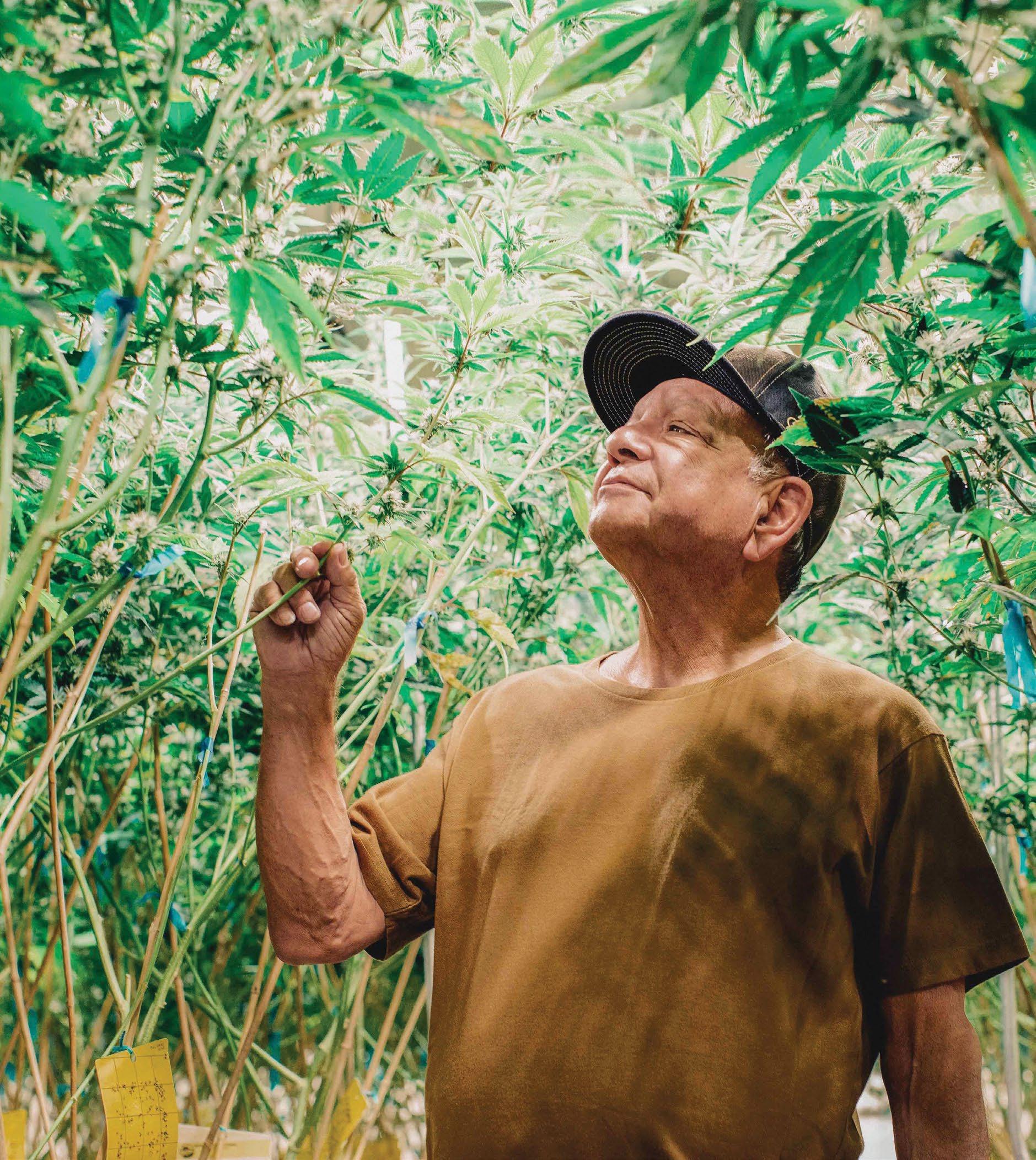
13 minute read
CHILLIN’ WITH CHEECH
from June 2022 - California Leaf
by Northwest Leaf / Oregon Leaf / Alaska Leaf / Maryland Leaf / California Leaf / Northeast Leaf
When it comes to icons of Cannabis culture, few are more universally recognized or revered as the legendary comedy duo of Cheech and Chong. From their humble beginnings as an improv act at a Vancouver strip club in the late 1960s, Richard “Cheech” Marin and Thomas Chong rose to counterculture stardom in the ‘70s and early ’80s with a string of gold and Grammy-winning comedy albums, followed by a series of hilarious films featuring characters that were laughable-yetlovable exaggerations of stoner stereotypes. Sadly, in 1985 – after nearly 20 years of entertaining audiences – the pair reached a creative impasse and decided to part ways.
As a solo artist, Marin transcended typecasting – appearing in dozens of films and television shows, including “Born in East L.A.” (which he wrote and directed) and the popular program “Nash Bridges,” as well as countless cameos and voiceover roles (including several animated Disney characters). Then in 2012, to the delight of their fans, Cheech and Chong announced that they were reuniting. They’ve since done several live comedy tours and an animated film together, and have launched their own Cannabis brands – further solidifying their status as reefer royalty.
But Cheech isn’t just an icon in the worlds of Cannabis and entertainment … he’s also an icon in the Mexican-American community. Marin has dedicated much of his life to illuminating and elevating Chicano culture and has spent decades amassing one of the most impressive collections of Latino art in the world. Now, he’s sharing that collection with the world via a sensational new museum bearing his name that opens its doors in Riverside, Calif. later this month. One month before the grand opening, Cheech sat down for a conversation with Leaf’s own Bobby Black to discuss his career, his thoughts on legalization, and his lifelong passions for art and marijuana.
When did you first get turned
on to marijuana? I was 19 and a freshman in college. I came home one night and there was a party going on in my apartment. My roommate passed this cigarette thing to me and I said, ‘What’s this?’ He says, ‘Marijuana.’ … So I smoked it and passed it around, and by the time it came back, I was high. Everything was going slower, more mellow, and the music sounded better. From that day forward, I was like, ‘Oh, so what else have they been lying about?’
After moving to Canada in the late ‘60s to avoid the draft, you met Tommy and began doing improv shows together – eventually signing a record deal with Lou Adler and releasing a series of comedy albums. The most famous of these is probably “Big Bambu,” which looked like a huge pack of rolling papers and even came with a giant rolling paper inside. Whose idea was that?
That was a guy named Craig Braun, who had this graphics company and made album packages. He also made the Rolling Stones album “Sticky Fingers” with the zipper. He came to Lou with the idea, and Lou went for it.
“Big Bambu” went on to become the best-selling comedy album in history at the time. I’m guessing you guys must have smoked a joint rolled with that giant
paper at some point? Numerous times! We’d be on the road, and kids would bring them to us and say, ‘We were saving this to smoke with you!’
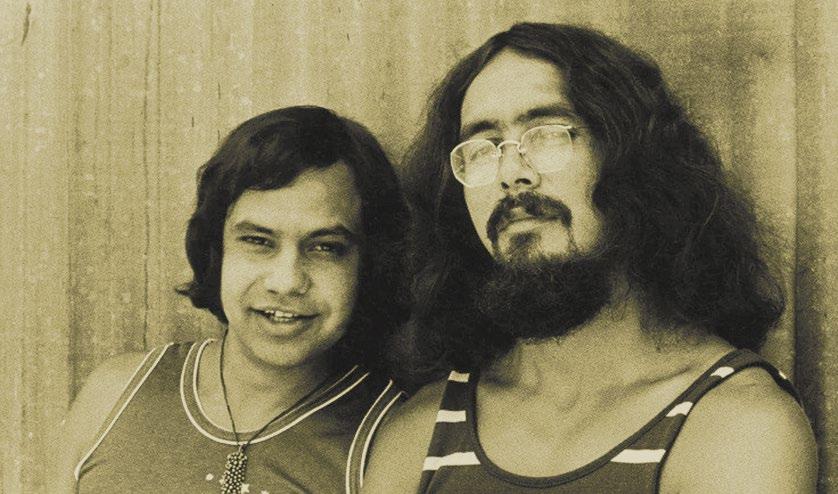
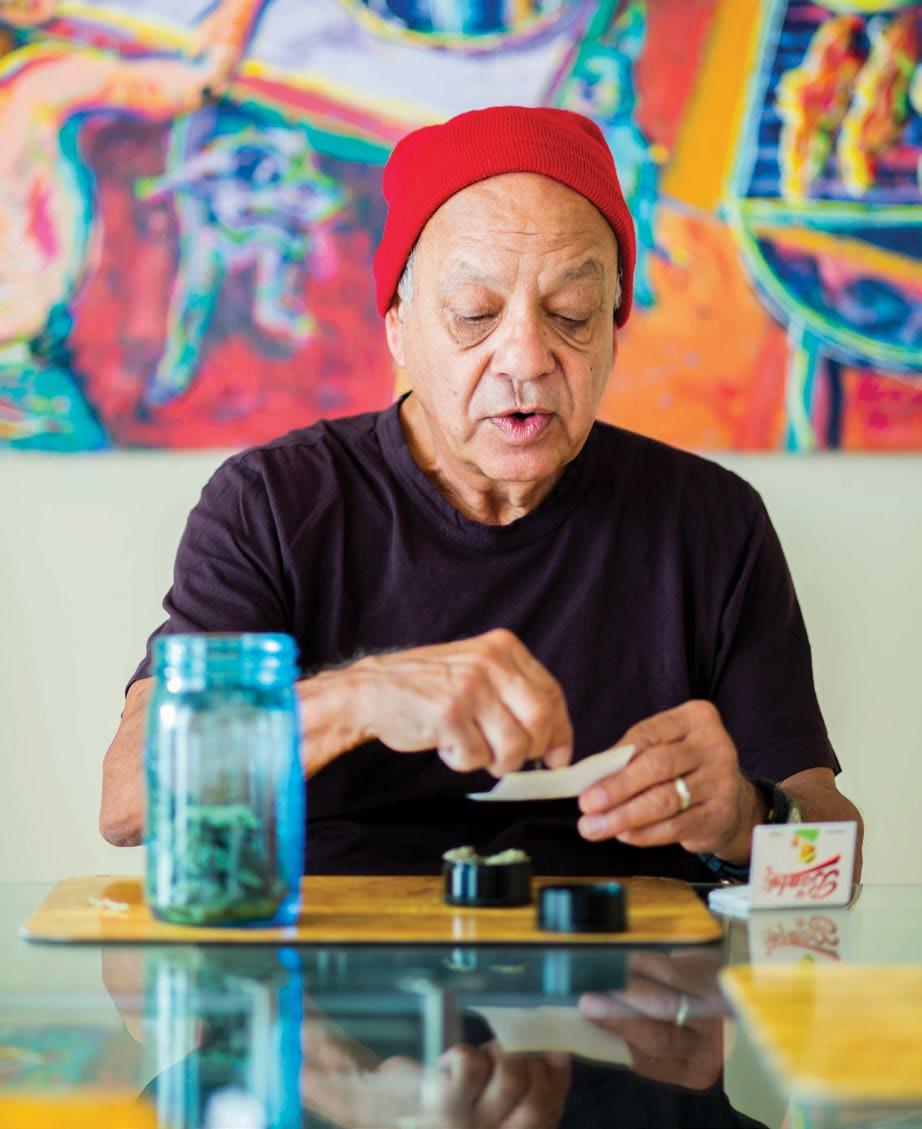
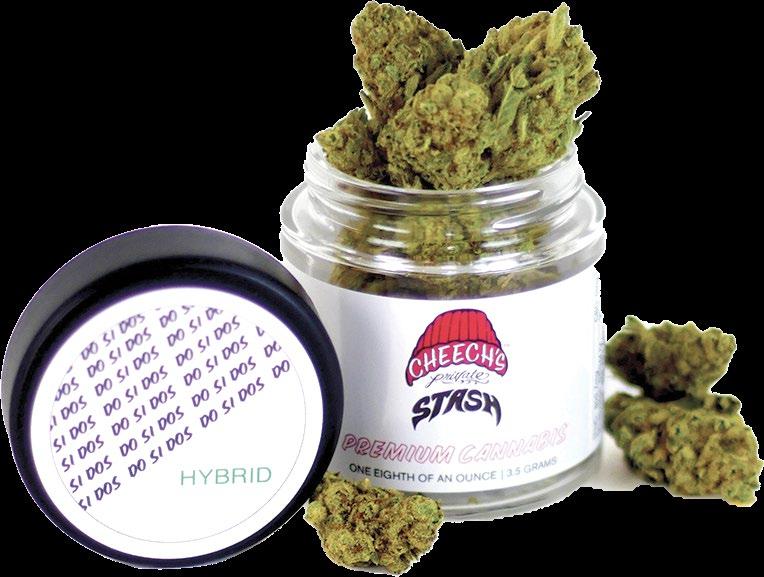
Cheech and Chong in their early days (1970).
From albums, you soon transitioned into films – starting with 1978’s cult classic “Up In Smoke.” You went on to make six movies together, including “Nice Dreams” which featured an appearance by LSD guru Timothy Leary. What was he like, and did you
guys trip out with him? Yeah, sure! [laughs] Timmy was one of our best friends. He was like a psychedelic Irish pub rabble-rouser. He was incredibly intelligent and the most fun guy you could ever meet. He knew a lot about astronomy, and he used to come over to our house and point out all the stars and the constellations to us. We spent a lot of time together.
What’s your favorite Cheech and Chong film,
and why? Probably ‘Up in Smoke’ because it encompassed a lot of the bits we were doing before and it was a big hit worldwide, but also because it was our first movie. Your first movie is really special, like your first love.
As you know, the word “marijuana” originated in Mexico as a slang term for Cannabis. Do you know much about how the
word originated and was used? It was used to denigrate [Cannabis] and give it this Mexican hue so that the police could use that as an excuse to stop Mexicans. It was also used to denigrate jazz musicians and black guys – like only them and Mexicans smoke this shit.
Well, yes … but that’s how Harry Anslinger and yellow journalists who had racist agendas used it against Mexicans. But it wasn’t
a bad word among Mexicans, was it? No, no – it was a salve. They made salve out of marijuana. They boiled it down … just like you have CBD now. Mexicans were using it for all kinds of ailments – to rub on their skin and make it hurt less. So from the very beginning, it’s always been a medicine.
There are some wokesters now who are claiming that the word “marijuana” itself is racist and that it shouldn’t be used anymore. As the world’s most famous and beloved Chicano pothead, how do you feel about the word marijuana? Do you think it’s negative and should be
canceled? I don’t really subscribe to that argument. Marijuana, Cannabis … it doesn’t matter to me. The fact that it’s a Spanish word means more to me. So for me, it’s a totally positive word. “I just get happy on weed.”
Some states are trying to rectify the War on Drugs’ injustices against people of color via social equity programs. What’s your assessment of where things are in terms of social equity for Hispanics and Chicanos?
I think it’s wide open right now. Anybody who cares to join, it seems, can … but it depends on what state you’re in and who controls that state. That’s the problem. So the big answer is to make it legal federally, and that wipes out a whole bunch of problems. We have to get it de-scheduled. I mean, when you have 39 out of 50 states that have some form of legalized marijuana, whether it be medical or recreational, how is that not legal? You gotta legalize it.
Are there any equity organizations you’ve
been involved in supporting? I like the Last Prisoner Project. We’ve been supporting that a lot. Because there are some guys still in jail for having a joint, you know? It’s ridiculous. It was a way to suppress that community, and they’re still trying to. But there’s no segment of society now that marijuana doesn’t enter – it affects the whole country.
In 2018, you launched your own Cannabis brand, Cheech’s Stash. How’s that been
going? It’s going very well. We’ve got everybody in the family working on it. My daughter, who’s a graduate of the Art Institute of Chicago, she handles all our graphics and social media. And my son is heavily involved in sales and … well, let’s call it ‘quality control.’ [laughs] But it’s hard to make a celebrity brand go because everybody has like “Elvis wine” or something, you know?
If anybody has enough cred to put out a
weed brand, it should be you. Well yeah, if it’s good … cause everybody’s gonna catch on real quick if it’s not. And so our motto is, ‘It will always be good.’ It may not always be the same, but no matter what strain it is, if it has our name on it, it will always be good.
Have you ever grown your own weed? Were
you any good at it? Yeah, but the less I did, the better it got. [laughs] A friend of mine who will go nameless – although his name is Jan Michael Vincent – he was an actor and a very good friend of mine. And one day he came to me and said, ‘Hey, I’m growing a bunch of plants here, and I’m gonna give you a couple.’ I said, ‘Oh, okay, great … where should I put ‘em?’ He told me, ‘Just put ‘em over there by those bushes.’ Then I went out on tour and when I came back, there were these Christmas trees that had grown through the bottom of the pot! They were huge,
with giant colas on them, and it was like, ‘Holy shit, man!’ And this had just coincided with the advent of the Seal-a-Meal, so you could vacuum-seal all your food. I thought, ‘Should work for marijuana, too’ – so we vacuum-sealed all the biggest buds and we had great weed for a long time.
You and Tommy are also launching a new Cannabis brand together
now, right? Yeah, it’s called Cheech and Chong’s Cannabis Company. We still have our own separate lines, but there’s a lot of value in being together rather than apart, and there was a company that thought so and put the money behind it. The original intention was to open Cheech and Chong dispensaries, but that doesn’t seem like such a viable thing now because you don’t really need brick and mortar dispensaries in a lot of cases, and that’s a real big overhead. So we decided to just do our products, sell them to everybody and increase the presence of our brands.
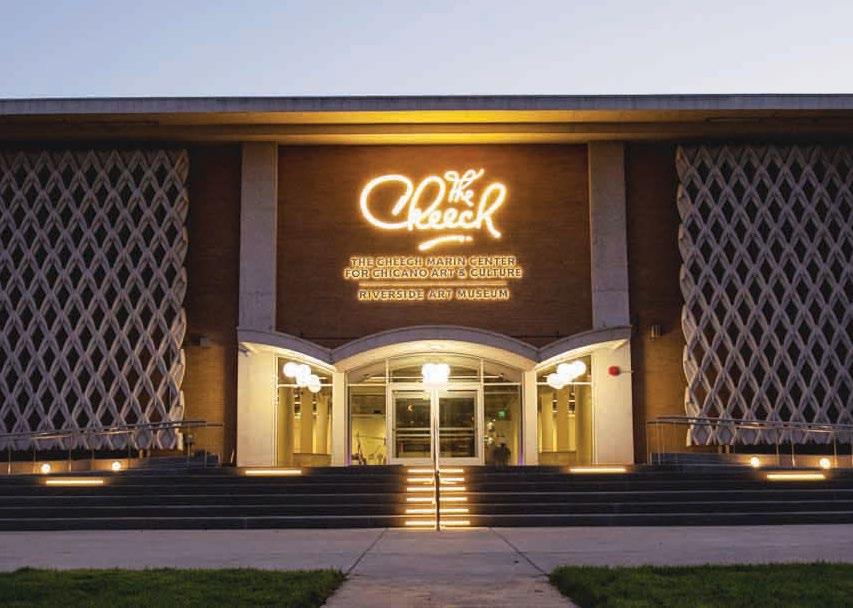
Do you still get high pretty often?
Define pretty often … like every minute? [laughs] Well, maybe not every minute, but every day – sometimes all day. I just get happy on weed.
What’s your preferred method? I’m a flower guy, man. I like a pipe and flower. But I’m getting to like edibles more.
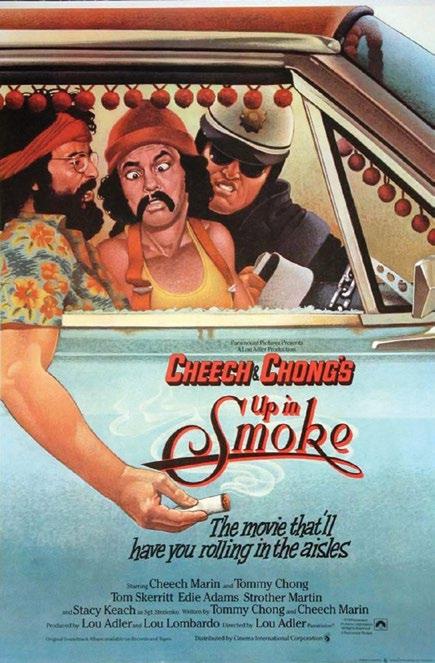
What about dabs, do you like dabs?
Yeah, as a matter of fact, I do – very much. How I got introduced to it is that I had to have my second knee replacement about a year or two ago. For the first one, I was prescribed these opioids to ease the pain and the rehabilitation. That was a long journey – I got kind of hooked on them, and at the end, it wasn’t working no matter how many I took. It got very depressing because the pain was still there, and nothing I was doing was helping. Then, after six months, one day it just stopped. I waited 10 years before the next operation because I didn’t want to go through that again. And that’s when I found dabs. A buddy of mine introduced me to dabs, she said, ‘This will help ease that pain.’ So I did it, and it was unbelievable. I mean, you got high, but it was a body high – it kind of invaded your whole body and took the edge off the pain. And then the rehabilitation was just two months and I was ready to go – I could walk, run, do anything.
ABOVE:the facade of The Cheech at dawn. LEFT: The yetuntitled 26-foot lenticular artwork by Einar & Jamex de la Torre, seen standing with Cheech Marin at its base during installation on April 26, 2022.
PHOTOS COURTESY OF THE RIVERSIDE ART MUSEUM
How would you compare the classic strains from the ‘70s to modern
weed? Well, the new weed doesn’t pop your eye out if a seed explodes. [laughs] You always had to watch for that, man. You know, ‘Pop! Oh, geez – it almost got me!’ Because it was Mexican weed, and they just chopped it down and bundled it up.
Let’s shift away from Cannabis and talk about your other great passion – art. Tell us how that incredible collection of yours came
about. Well, I was always interested in art from a very early age because I had this group of Chicano cousins who were very bright, and they started assigning us topics to go out and find out about – and I got assigned art. So I went to the library and took out all the art books and was like, ‘Oh – that’s what Picasso looks like, that’s what Michelangelo and DaVinci and Miro look like.’ And that’s how I learned about art. From that day forward, I used to go to museums a lot because you have to see paintings in person to get the full value. So when I had enough money all of a sudden, with the success of Cheech and Chong, I could actually afford to buy art. That’s when I discovered the Chicano painters. I said, ‘Whoa – I see what these guys’ influences are; they’re all international art and Mexican culture and their neighborhoods, and wow – how come they’re not being shown? Why aren’t they getting shelf space in museums and galleries?’ So I said, ‘OK, well, I’m gonna start collecting this art’ – because all the masterpieces of Chicano art were basically still out there for purchase. So I was the right guy at the right place at the right time.
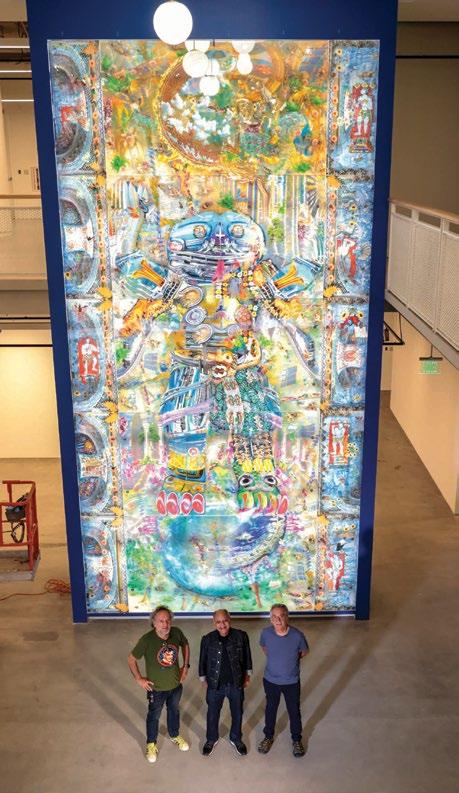
And now, that collection is serving as the foundation of a new museum in Riverside that’s opening this month called The Cheech Marin Center for Chicano Art and Culture.
Or, as the intimates like to call it, ‘The Cheech.’
This has obviously been in the works for a long time, so I bet you’re very excited about it. Tell us how it all came together.
I’m so excited, I can’t tell you! I was doing a show with part of the collection at the Riverside museum there, and it was the biggest show they ever had attendance-wise. It was unbelievable. And so they had this beautiful mid-century building, which was the town library, but they were gonna build a new library down the street and they had to repurpose the building. So the town manager saw the show and came up with this big idea: He said, ‘Why don’t we give the building to Cheech, and he’ll house the collection there.’ I said, ‘OK – sounds good to me!’ That was five years ago. It got delayed due to Covid, but now on June 18 the museum is finally going to open, and it’s spectacular. I mean, I’ve been in a lot of museums in my life, and this one is really spectacular.
So, what can attendees expect on opening day? Is there going to be a
big party? Oh yeah — We’re gonna have three days of festivities before we open. We’re even gonna have a low rider parade come up to the front of the museum. And people can expect to see a really unbelievable museum with art they’ve generally never seen before. Because my mantra is: You can’t love or hate Chicano art unless you see it.
ABOVE:Artwork by Frank Romero in Cheech’s personal art collection.
What’s next for you after this? You know, Woody Harrelson just opened a smoke lounge in West Hollywood … I know you said you’re not opening dispensaries, but what about a smoke lounge with a Cheech and
Chong theme and decor? That would be really cool. I actually just finished working with Woody on a picture this December in Winnipeg, and we had a great time. He’s an old buddy. But yeah, sure – I mean, if some smoke lounge opens up and it makes sense, we’d be interested. You never know.










